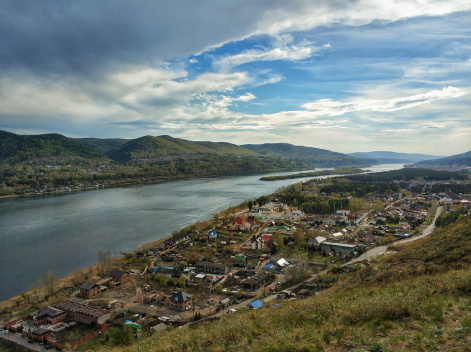Why is it necessary to save the Yenisei?
21 May 2019 г.

The Krasnoyarsk Internet community is vigorously discussing which problems associated with the Yenisei require immediate solution. The concerned citizens raise a whole range of problems. Most people want to understand why the river does not freeze in winter and how it affects the aquatic artery itself and inhabitants of the regional center. Other people wonder why there are a lot of parasites in the fish of the Yenisei.
The discussion of the fate of the Yenisei has began due to the leading research associate at the Institute of Biophysics of the Krasnoyarsk Science Center of the Siberian Branch of the Russian Academy of Sciences, Candidate of Biological Sciences, Egor Zadereev. On his Facebook page he asked his subscribers a question what water problems they are most concerned about.
“The residents cannot influence the temperature regime of the river, says Egor Zadereev. - The Yenisei is cold in summer and warm in winter due to the design features of the water intake at the hydroelectric power plant. It is theoretically possible to change it, but all the projects are quite expensive and unlikely to be implemented. The Yenisei is heavily polluted by the existing and already shut industrial facilities. Everyone remembers the situation with the tank farm facility on the right bank, with “periodically flowing oil spills”. To get rid of this pollution, large investments are required, for which neither the state nor the business are ready yet."
At the same time, a member of the Yenisei Basin Council at Rosvodresources, director of the Krasnoyarsk environmental organization PLOTINA, Alexander Kolotov, notices that not only enterprises are to blame for the pollution of the Yenisei with oil products. “Among the sources are the ships that sail along the Krasnoyarsk reservoir,- the expert states - Their owners wash the tanks, discharging the remnants of fuel into the water, and through the dam of the Krasnoyarsk Hydroelectric Power Plant the pollution reaches the lower pool. Also, on the banks of the river there are enough people who, without a twinge of conscience, discharge diesel fuel and other petroleum products into the water area of the Yenisei River in such volumes that it is often necessary to attract rescuers to clean the river.
Therefore, in general, from year to year the picture does not change: according to Russian Greenpeace, the average annual export of petroleum products from the Yenisei to the Arctic Ocean remains almost unchanged."
Within the boundaries of Krasnoyarsk, the problem of household wastes has not been completely solved yet. Residential buildings are connected to a centralized sewage system, and before entering the Yenisei, waste water is treated at sewage treatment plants, but the storm sewers in the city were built so that its water flows directly into the river. Owing to community activists and environmental prosecutor's office, the situation begins to change, but it is too early to talk about success.
Thanks to the development of satellite technologies, experts realized the size of another problem. Last year, at the end of June, specialists from the Center for Satellite Monitoring and Civil Control from St. Petersburg discovered on one of the satellite images downstream gold mining sites on the Mana River a huge plume of pollution by suspended substances, stretching more than 200 kilometers downstream, to the confluence of the Yenisei.
“This is surprising, but we do not know much about the causes of pollution in different parts of the river: the studies are quite expensive, and standard monitoring points do not allow to get a complete picture,- says Egor Zadereev. - The Yenisei, of course, should be the pride of both Krasnoyarsk and the country - after all, this is one of the great rivers of the world. I would like to see a comprehensive river research program implemented in the region. For example, in Germany, the entire scientific institutes work on the control and management of the quality of water even in small reservoirs. In the late 1980s, in Krasnoyarsk the “Pure Yenisei” program was much talked about.
It was one of the initiatives of local scientists - to approve the program which was to make the Siberian River clean and healthy again. I think it's time to come back to this idea."
It is obvious that such large projects can be realized only by joint efforts of all interested parties, and it will take more than a year. Experts are sure that every citizen of Krasnoyarsk can help the Yenisei.
"Each of us, at least, should not leave the garbage on the river banks, or discharge the waste oil, or wash the car near the river", - says Egor Zadereev. As far as poaching is concerned, the best thing any concerned person can do is to buy fish only in the shops. Helping the Yenisei for many Krasnoyarsk citizens has long been, so to say, a lifestyle. Since 2011, a large-scale environmental volunteer project “The Yenisei Day” has been organized in our region. Every year thousands of volunteers and more than 20 organizations clean the banks of the Yenisei.
Share:
